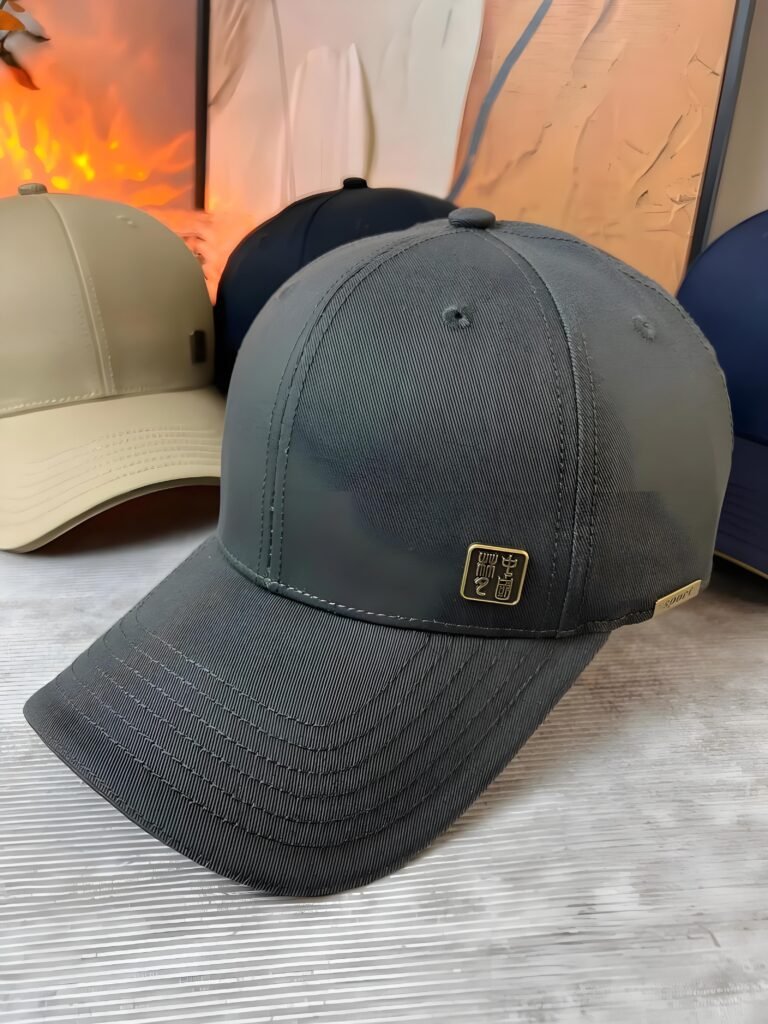Title: The Craftsmanship of Sewing PVC Patches onto Baseball Caps: A Detailed Exploration
Introduction
Baseball, a sport steeped in tradition and rich in history, has seen its equipment and apparel evolve significantly over the years. Among these changes, the incorporation of PVC (Polyvinyl Chloride) patches on baseball caps stands out as a blend of modern innovation and timeless style. This article delves into the world of PVC patches, exploring their manufacturing process, the art of sewing them onto baseball caps, their multifaceted benefits, and the trends shaping their future in the baseball industry.

Section 1: Understanding PVC Patches
1.1 What are PVC Patches?
PVC patches are meticulously crafted embellishments made from Polyvinyl Chloride, a versatile and durable plastic material. These patches are designed to add a touch of personalization, branding, or functional enhancement to various items, including baseball caps. Their ability to withstand the elements, coupled with their vibrant colors and intricate designs, makes them a popular choice for baseball enthusiasts.
1.2 The Manufacturing Process
The production of PVC patches involves a series of steps that ensure the final product is of the highest quality. It begins with the creative design phase, where graphic designers create intricate artwork that will be transferred onto the PVC material. This design is then digitally printed or embossed onto a sheet of PVC using specialized machinery. Once the design is set, the PVC sheet is precision-cut into the desired shape and size, ready for application onto baseball caps.
1.3 Types of PVC Patches
PVC patches come in a variety of styles, each catering to different needs and preferences:
- Embossed Patches: These feature a raised design, adding texture and depth to the cap.
- Printed Patches: Offer a smooth, flat surface with vibrant, detailed designs.
- 3D Patches: Incorporate multiple layers for a more dimensional look and feel.
- Reflective Patches: Enhance visibility and safety, particularly during night games or low-light conditions.
Section 2: The Significance of PVC Patches on Baseball Caps
2.1 Aesthetic Appeal
Baseball caps, beyond their functional role of shading the eyes and protecting against the sun, have become a fashion statement and a canvas for personal expression. PVC patches allow individuals to showcase their team logos, favorite brands, or even personalized messages, adding a unique flair to their baseball caps.
2.2 Functional Benefits
PVC patches serve more than just an aesthetic purpose. They can reinforce the cap’s structure, providing additional durability and longevity. In the case of baseball caps, which are often subjected to rigorous use and exposure to the elements, patches can help protect the fabric from wear and tear, extending the cap’s lifespan.
2.3 Brand Promotion
For baseball teams, sponsors, and apparel manufacturers, PVC patches offer a prime opportunity for brand exposure. A well-placed logo or slogan on a baseball cap can significantly increase brand recognition, especially during games and events where caps are constantly in the public eye.
Section 3: The Art of Sewing PVC Patches onto Baseball Caps
3.1 Preparation and Materials
Before embarking on the sewing process, it’s crucial to gather the necessary materials and ensure the baseball cap and PVC patch are in optimal condition. This includes:
- High-Quality Thread: Choose a strong, durable thread that matches the cap’s fabric and the patch’s color. Polyester or nylon threads are commonly used for their strength and resistance to wear.
- Sewing Needles: Opt for needles suitable for the thickness of the cap’s material and the PVC patch. A size 16 or 18 needle is usually appropriate.
- Sewing Machine (Optional): While hand-sewing is possible, a sewing machine can provide more precise and efficient stitching.
- Fabric Glue (Optional): For added security, fabric glue can be used to adhere the patch before stitching.
3.2 Positioning the Patch
Precision is key when positioning the PVC patch on the baseball cap. Consider the cap’s design, the patch’s size, and the desired placement. Common positions include the front, side, or back of the cap, depending on the intended visibility and aesthetic preference. For team logos or sponsor patches, placement may be dictated by league regulations or brand guidelines.
3.3 Sewing Techniques
Sewing PVC patches onto baseball caps requires a combination of skill and patience. Here’s a step-by-step guide:
- Pinning the Patch: Secure the patch in place using pins to prevent it from shifting during stitching. Ensure the patch is aligned correctly and centered in the desired position.
- Choosing the Stitch: Depending on the cap’s fabric and the patch’s design, select the appropriate stitch. Straight stitches work well for clean, simple lines, while zigzag stitches provide more flexibility and strength. For added durability, consider using a double stitch or a satin stitch.
- Starting the Stitch: Begin stitching from the center of the patch and work outwards, ensuring even tension on the thread to avoid puckering or distortion. Take care to stitch close to the edge of the patch to ensure a secure attachment.
- Finishing Touches: Backstitch at the beginning and end of your stitching to reinforce the seam. Trim any excess thread carefully to maintain a neat appearance. If using fabric glue, apply it around the edges of the patch after stitching to further secure it in place.
3.4 Quality Control
After sewing the PVC patch onto the baseball cap, inspect it thoroughly for any loose stitches, gaps, or areas that might require additional reinforcement. Ensure the patch is securely attached and aligned correctly. Any imperfections should be addressed immediately to maintain the cap’s overall aesthetic and functionality.
Section 4: Caring for Baseball Caps with PVC Patches
4.1 Cleaning and Maintenance
Regular cleaning is essential to maintain the appearance and longevity of baseball caps with PVC patches. Use a soft, damp cloth to gently wipe away dirt and debris. Avoid harsh chemicals or abrasives that could damage the patch or the cap’s fabric. For stubborn stains, consult the manufacturer’s cleaning instructions or use a mild detergent and cold water.
4.2 Storage
When not in use, store your baseball cap in a cool, dry place away from direct sunlight. This will help prevent fading and cracking of the PVC patch, as well as protect the cap’s overall structure. Avoid stacking heavy items on top of the cap to prevent crushing or deformation.
4.3 Repairs
If a PVC patch becomes loose or damaged, prompt repair is crucial. Small tears or loose stitches can be fixed with fabric glue or additional stitching. For more significant damage, it might be best to consult a professional for repair or replacement to ensure the cap retains its original aesthetic and functionality.


